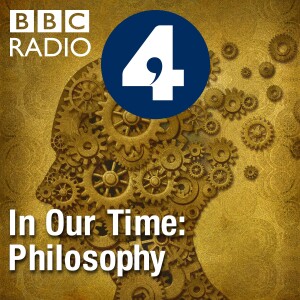
Melvyn Bragg and guests discuss the 19th century Parisian philosophy of life lived for art. In 1848 the young Parisian Henri Murger wrote of his bohemian friends: Their daily existence is a work of genius…they know how to practise abstinence with all the virtue of an anchorite, but if a slice of fortune falls into their hands you will see them at once mounted on the most ruinous fancies, loving the youngest and prettiest, drinking the oldest and best, and never finding sufficient windows to throw their money out of. Then, when their last crown is dead and buried...they go poaching on all the callings that have any connection with art, hunting from morn till night that wild beast called a five franc piece. Bohemianism meant a life lived for art, it meant sexual liberation and freedom from social constraint, but it also meant dodging the landlord and burning your poems to stay warm. How did the garret-philosophy of the Parisian Latin Quarter take over the drawing rooms of Bloomsbury and Chelsea, and why did a French war with necessity emerge as a British life-style as art? With Hermione Lee, Goldsmiths' Professor of English Literature at the University of Oxford and biographer of Virginia Woolf; Virginia Nicholson, author of Among the Bohemians: Experiments in Living 1900-1939; Graham Robb, writer and biographer of Balzac, Victor Hugo and Rimbaud.
view more
More Episodes
Philippa Foot
 2024-06-13
2024-06-13
 2024-06-13
2024-06-13
Panpsychism
 2024-02-22
2024-02-22
 2024-02-22
2024-02-22
Condorcet
 2024-02-08
2024-02-08
 2024-02-08
2024-02-08
The Theory of the Leisure Class
 2023-12-14
2023-12-14
 2023-12-14
2023-12-14
Aristotle's Nicomachean Ethics
 2023-11-30
2023-11-30
 2023-11-30
2023-11-30
Elizabeth Anscombe
 2023-07-20
2023-07-20
 2023-07-20
2023-07-20
Solon the Lawgiver
 2023-04-20
2023-04-20
 2023-04-20
2023-04-20
Mercantilism
 2023-04-13
2023-04-13
 2023-04-13
2023-04-13
Tycho Brahe
 2023-03-02
2023-03-02
 2023-03-02
2023-03-02
Rawls' Theory of Justice
 2023-02-16
2023-02-16
 2023-02-16
2023-02-16
Plato's Atlantis
 2022-10-20
2022-10-20
 2022-10-20
2022-10-20
Hegel's Philosophy of History
 2022-06-23
2022-06-23
 2022-06-23
2022-06-23
Comenius
 2022-06-16
2022-06-16
 2022-06-16
2022-06-16
Charisma
 2022-04-14
2022-04-14
 2022-04-14
2022-04-14
The Arthashastra
 2022-03-31
2022-03-31
 2022-03-31
2022-03-31
In Our Time is now first on BBC Sounds
 2022-03-04
2022-03-04
 2022-03-04
2022-03-04
Walter Benjamin
 2022-02-10
2022-02-10
 2022-02-10
2022-02-10
Plato's Gorgias
 2021-11-25
2021-11-25
 2021-11-25
2021-11-25
Iris Murdoch
 2021-10-21
2021-10-21
 2021-10-21
2021-10-21
Kant's Copernican Revolution
 2021-06-03
2021-06-03
 2021-06-03
2021-06-03
012345678910111213141516171819
Create your
podcast in
minutes
- Full-featured podcast site
- Unlimited storage and bandwidth
- Comprehensive podcast stats
- Distribute to Apple Podcasts, Spotify, and more
- Make money with your podcast
It is Free
- Privacy Policy
- Cookie Policy
- Terms of Use
- Consent Preferences
- Copyright © 2015-2024 Podbean.com



